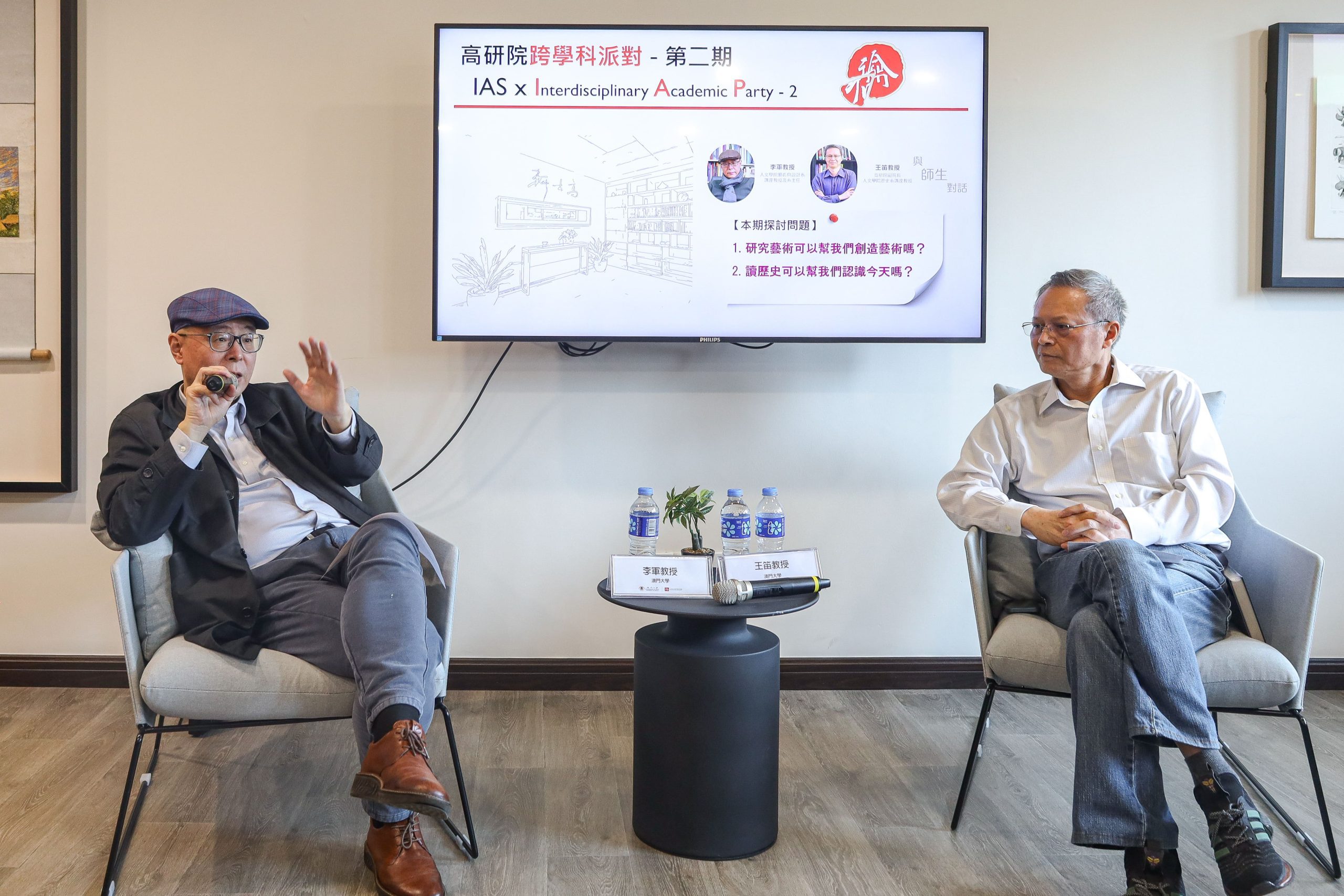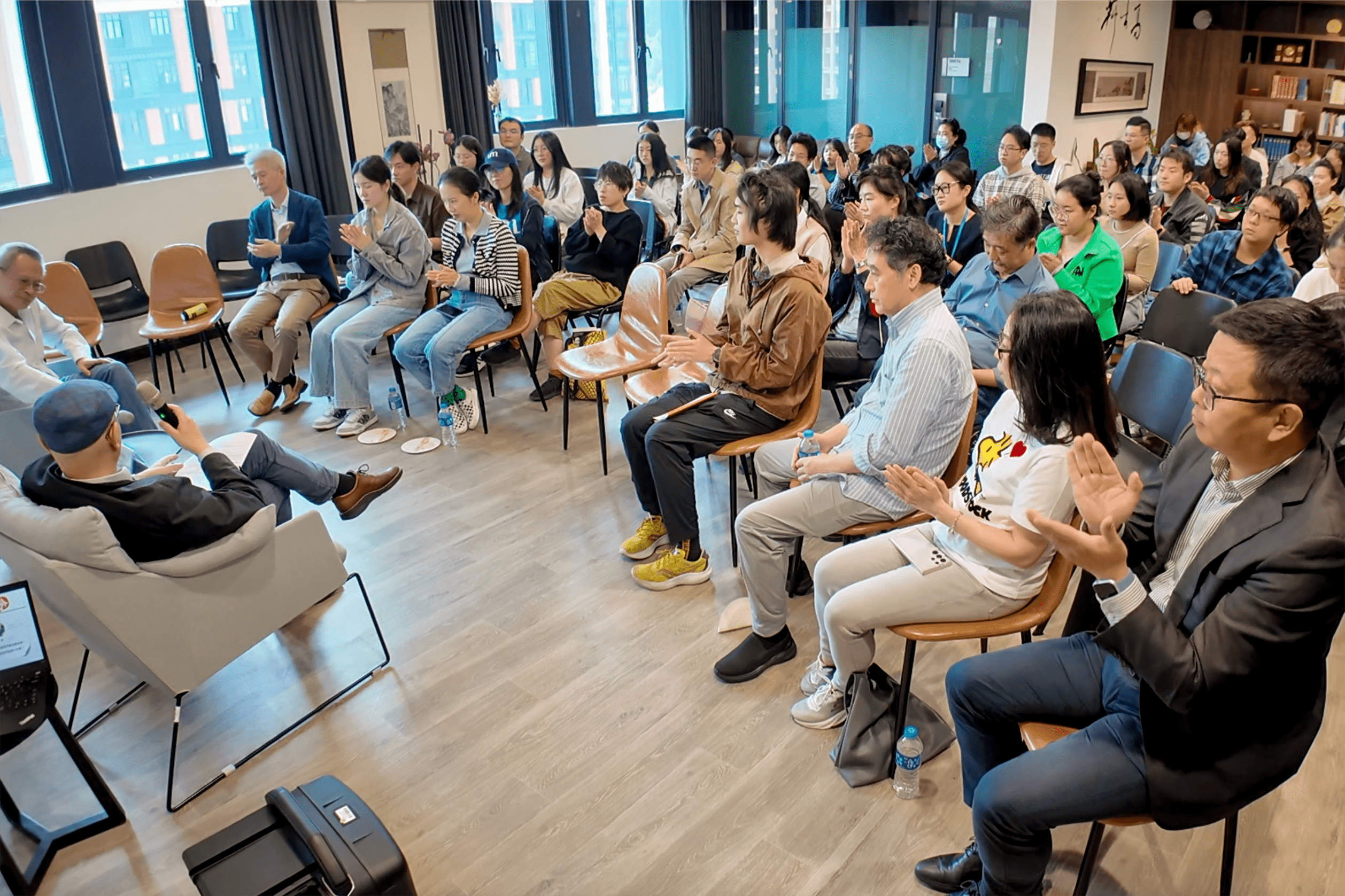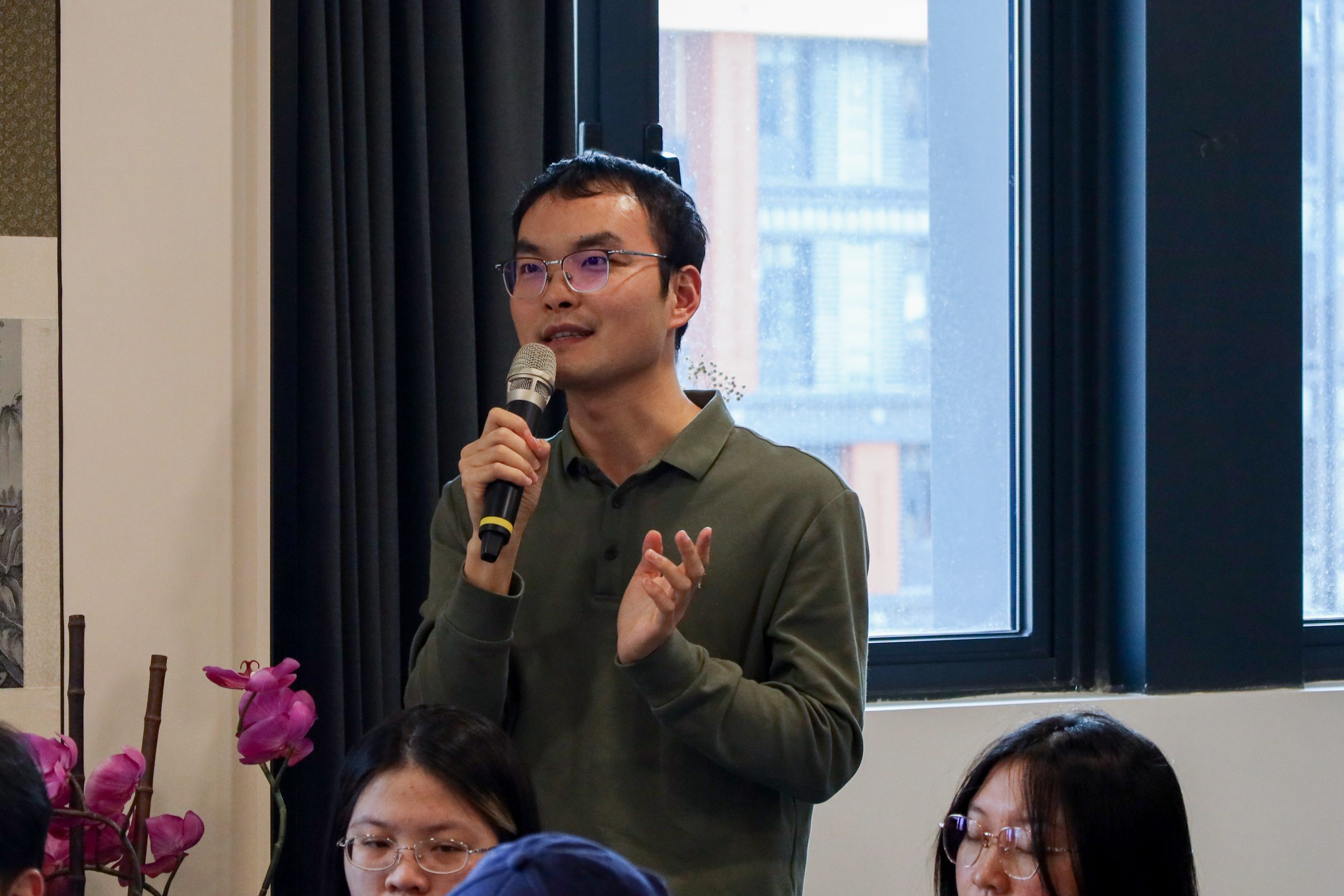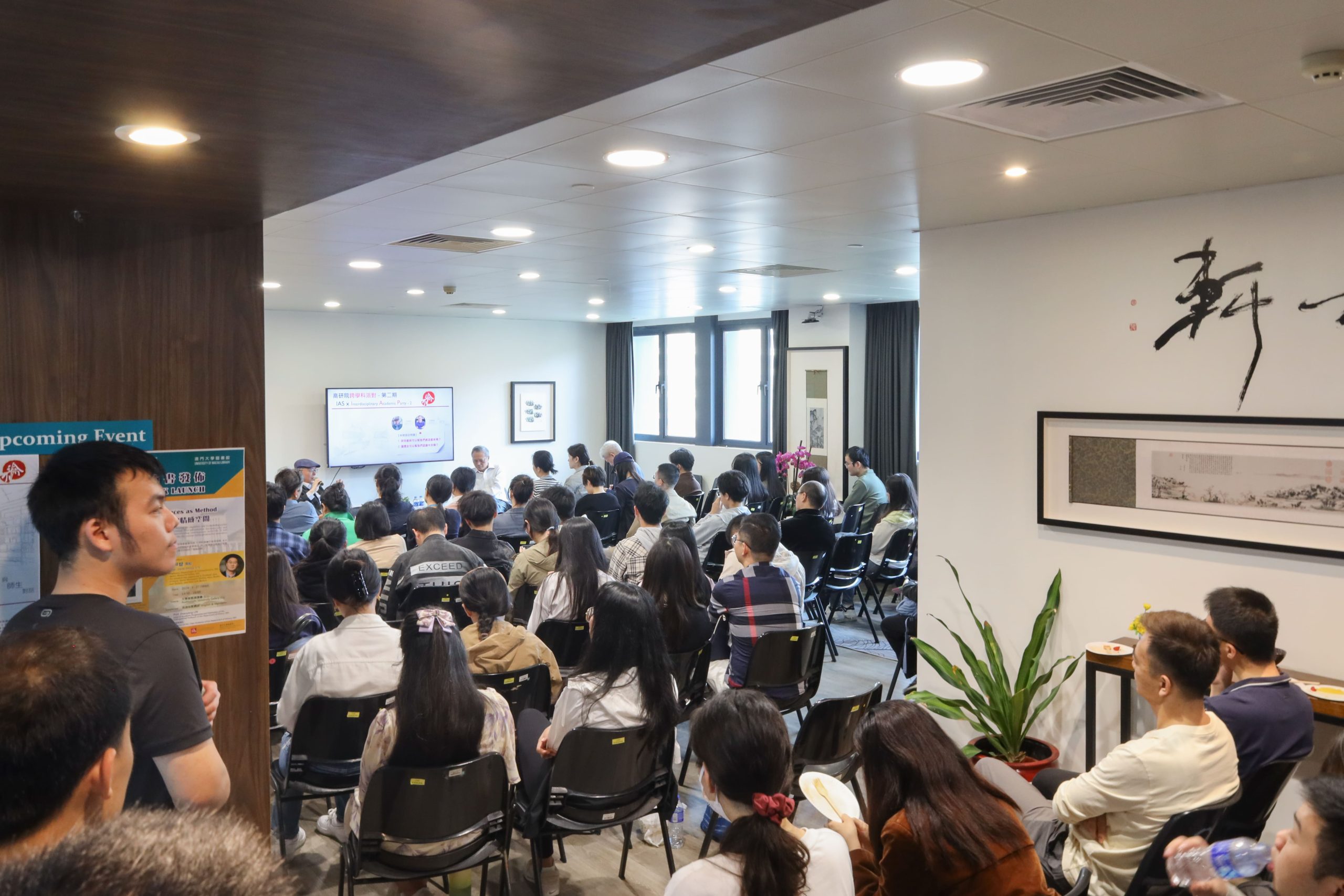【IAS】The IAS x Interdisciplinary Academic Party – 2 was successfully conducted
【高研院】高研院跨學科派對-第二期成功舉行

由高研院主辦的第二期跨學科派對,於3月21日在崇文樓高士軒成功舉行。是次派對以「人文與藝術」為主題,並邀請人文學院藝術與設計系講座教授及系主任——李軍教授,高研院副院長、人文學院歷史系講座教授——王笛教授擔任講者。
王笛教授首先分享了微觀史中,藝術的想象力對歷史學的敘述所起到的作用。運用歷史的藝術、技巧,歷史學家書寫出妙趣橫生的故事。藝術與歷史有著共通之處:其一是大處著眼、由面及點。譬如繪畫,要先佈局輪廓,再作細微裝點。寫作同樣如此,收集資料、閱讀資料、匯集成編、分而細化。史家著書反復思考、易稿十數,水墨丹青仔細色彩、考究線條。其二是層次分明,意在筆先。在高處的天空,飛機上俯瞰城市,細節是不清楚的。到了地面,只見城牆、街坊。走進巷尾,看到林立的店鋪、各色的商販,直至遇到茶館裏的某個人。這便是研究一座城市時的遠景、中景、近景以及特寫。田野調查之後,須將內心的畫面,用文字表達出來,恰是藝術的理解,幫助了歷史寫作。
其後,李軍教授以史為鏡,抒發了真實之思。編述跨文化藝術史年鑑,接觸到的文本圖像是餘下的殘篇遺跡,過去的現場已然丟失。目的不是與過去的人分享經驗,所以藝術研究者將它們選擇性的帶到現在。正如足球賽的現場直播,觀衆看到躲閃、射門,但這些並不一定是真實的,因爲它們經過剪裁、選擇、取捨、組合,是現場的歷史,也是藝術的一部分。有了藝術存在的問題,轉播、假新聞、AI所生成的影像,不禁令人揣摩何爲歷史的真實,無論是一場足球賽還是俄烏戰爭的報導。
在回答什麼是歷史以及其與藝術史的異同時,王笛教授表示任何問題都與歷史有關,無論藝術、文學、人類學等等。藝術史就是在做歷史,是從歷史的角度研究藝術,認識所研究的對象,區別在於前者圖像多一點,後者文字多一點,使用的材料有差異,回答的問題不一樣。兩位教授隨後探討了漫畫、人文與藝術的關係。由於漫畫帶有社會批判性,思想解放時,往往是漫畫走在最前面,但政治一緊張,漫畫卻也是首先被消滅。王笛教授認爲,人人都應該勇於建言獻策,不宜妄自菲薄、自覺人微言輕。改革開放是歷史的偶然性,中國抓住了千年難遇的良機,而革故鼎新所依靠的便是千千萬萬的人民群衆,匯聚集成的雄渾之音。李軍教授則認爲歷史學是觀天道,並鼓勵同學遇事從容。
派對的最後,同學們發出哲學之問,問及教授們的人生終極目標。王笛教授會心一笑:馬斯克說他找得到長生不老的方法,但是他沒有執著於此。因爲我們始終無法阻擋人腦的衰老、思維的固化。如果一定要回答這一哲學的問題,走到哪裡去?走到墳墓裡面去。
高研院第二期跨學科派對,吸引了近百位師生的現場參與。席間,同學赤誠發言,學者談笑風生,跨學科氛圍濃烈,再次感謝兩位教授帶來的精彩的學術盛宴。高研院跨學科派對旨在增強校內師生跨學科研究活動及師生間的聯繫。該活動每期邀請不同學者就特定主題發表非正式的演講或對話,並提前向參與者徵集問題再轉交主講嘉賓,用於討論環節中與嘉賓互動探討,激發創新思維和學術探索。
The second IAS x Interdisciplinary Academic Party organized by IAS was successfully held on 21 March at the Common Room, Cultural Building. The theme of the party was “The Art and Humanities”. Prof. Jun Li, Chair Professor and Head of the Department of Arts and Design of FAH, and Prof. Wang Di, Associate Director of IAS and Distinguished Professor of the Department of History of FAH, were invited as speakers.
Prof. Wang highlighted the role of artistic imagination in micro-history within historiography. By combining art and historical techniques, historians can craft captivating narratives. Art and history share commonalities: both provide insights from a broader perspective and analyze details gradually, similar to how artists paint. Additionally, they exhibit a hierarchical structure. Viewing a city from afar lacks clarity, but approaching it reveals intricate features like city walls and neighborhoods. This method of studying a city involves observing it from various distances: far, medium, and close-up.
Afterwards, Prof. Li expressed his thoughts through the lens of history. In compiling a cross-cultural art history chronicle, one encounters textual images that remain as the last remnants of a lost scene from the past. The goal is not to share experiences with those who have been in the past but to bring them selectively to the present. Just like a live broadcast of a soccer match, the audience can witness dodging and shooting, but these actions are not always authentic, as they have been edited, selected, and merged. These are what we call the building blocks of history, as well as the components of art.
The two professors subsequently engaged in a conversation regarding the interplay between comics, humanities, and art. Comics, being socially critical in nature, often spearhead movements for ideological liberation. However, they are also the first to be suppressed during periods of political tension. Prof. Wang advocates for the importance of individuals expressing their opinions and suggestions with courage. Conversely, Prof. Li emphasizes the observation of natural patterns in history and encourages students to maintain composure and stability during challenging times.
At the end of the party, a student asked a philosophical question about professors’ ultimate goals in life. Prof. Wang laughed heartily and said, “If I must answer this philosophical question: where to go? My answer will be to the grave.”
The event attracted nearly 100 students and faculty members to participate. It is obvious that the interdisciplinary atmosphere during the party was strong, and all these could never have happened without the two professors for their brilliant efforts to bring us a wonderful academic feast. The aim of the IAS interdisciplinary academic party is to enhance the interdisciplinary research activities of the faculties and students on campus as well as to strengthen the ties between students and scholars, and to stimulate innovative thinking and academic exploration.




